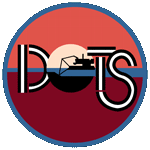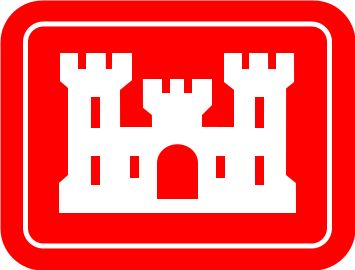

| Field Name | Description |
|---|---|
| % Effect | The magnitude of the effect (e.g., % mortality; change in weight; change in length; percent hatch; etc.). |
| Analyte | The chemical substance used to create the exposure. |
| CAS | CAS registry number is a unique numerical identifier assigned by Chemical Abstract Service (CAS) to a chemical substance. |
| COLL | Where the animal was obtained: C (cultured-reared in laboratory); W (collected from wild); N/I (No Information); N/R (Not Reported). |
| Comments | Commonly supports the effects data. |
| Common name | Common name of the test animal. |
| Control | The control response for the observed effect (e.g., survival, growth, reproduction; etc.). |
| Dose | The frequency with which the contaminant was applied during the test. |
| Duration | The duration of the exposure period: hr (hours); d (days) wk (weeks), mo (months), yr (years). |
| Effect | The type of toxicological effect observed in the test animal (e.g., survival, growth, reproduction). |
| ERED ID | Unique identification number autogenerated by database. |
| ExpConc | The exposure concentration and units. |
| Fraction | The test animal tissue used to determine tissue residue (e.g., whole body, soft tissue, liver, etc.). |
| Genus Species | Scientific name of the test animal. |
| Media | Type of water used to test animal: FW (freshwater); SW (saltwater) |
| Mix | Whether the analyte was tested as part of a mixture of analytes or individually: yes (part of mixture), no (single), or N/I (No information). |
| Risk | Summary of the risk (e.g., ED, NOED, LOED) an analyte might pose to the test animal. Previously, many risk numbers were assigned to results. Going forward ERED will not report a risk number unless it is reported in the study. |
| Route | The route by which the analyte was intended to enter the body: aquatic; diet; injection. |
| Signif | Whether the effect was significantly different, usually compared to the control for laboratory studies: Yes (significant); No (not significant). |
| Source | Reference from which data was obtained. |
| Spiked | Whether the analyte was spiked into the route (aquatic, diet, sediment, injection): yes (analyte spiked), no (analyte not spiked) |
| ST | Study type: L (Lab); F (Field); L/F (Lab/Field); Meso (Mesocosm); Micro (Microcosm); N/I (No Information). |
| Stage | Life stage of the test animal (e.g., egg, larval, juvenile, adult). |
| Tissue ww (mg/kg) | Tissue residue of analyte in the test animal tissue (mg/kg wet weight). |
| Trend | The trend of the effect, usually compared to the control for laboratory studies: INC (increase); DEC (decrease), NEF (No effect). |
Source: Opperhuizen and Schrap. 1988. Uptake efficiencies of two polychlorobip.... Chemosphere 17:253-262..
| Genus Species | ERED ID | ST | Common | Stage | COLL | Analyte | CAS | MX | SPK | H2O | Route | CONC | Dose | DUR | Residue mg/kg ww |
Fraction | Effect | Trend | Signif | % Effect | Control | Risk | Comments | Source |
|---|---|---|---|---|---|---|---|---|---|---|---|---|---|---|---|---|---|---|---|---|---|---|---|---|
| Poecilia reticulata | 2052 | L | guppy | adult | N/R | PCB 133 | 35694-04-3 | Y | Y | FW | diet | 1400 mg/kg | daily | 65 d | 359.7 | whole body | mortality | INC | Y | 22% | 0% | N/R | 22% mortality; mixed w/PCB 197 | Opperhuizen and Schrap. 1988. Uptake efficiencies of two polychlorobip.... Chemosphere 17:253-262. |
| Poecilia reticulata | 2053 | L | guppy | adult | N/R | PCB 133 | 35694-04-3 | Y | Y | FW | diet | 550 mg/kg | daily | 65 d | 120.8 | whole body | mortality | NEF | N | <13% | 0% | N/R | < 13% mortality; mixed w/PCB 197 | Opperhuizen and Schrap. 1988. Uptake efficiencies of two polychlorobip.... Chemosphere 17:253-262. |
| Poecilia reticulata | 18948 | L | guppy | adult | N/R | PCB 133 | 35694-04-3 | Y | Y | FW | diet | 150 mg/kg | daily | 191 d | 144.9 | whole body | mortality | NEF | N | <13% | 0% | N/R | < 13% mortality; mixed w/PCB 197 | Opperhuizen and Schrap. 1988. Uptake efficiencies of two polychlorobip.... Chemosphere 17:253-262. |
| Poecilia reticulata | 18949 | L | guppy | adult | N/R | PCB 133 | 35694-04-3 | Y | Y | FW | diet | 73 mg/kg | daily | 247 d | 65.3 | whole body | mortality | NEF | N | <13% | 0% | N/R | < 13% mortality; mixed w/PCB 197 | Opperhuizen and Schrap. 1988. Uptake efficiencies of two polychlorobip.... Chemosphere 17:253-262. |
| Poecilia reticulata | 18950 | L | guppy | adult | N/R | PCB 133 | 35694-04-3 | Y | Y | FW | diet | 7.1 mg/kg | daily | 247 d | 7.4 | whole body | mortality | NEF | N | <13% | 0% | N/R | < 13% mortality; mixed w/PCB 197 | Opperhuizen and Schrap. 1988. Uptake efficiencies of two polychlorobip.... Chemosphere 17:253-262. |
| Poecilia reticulata | 18951 | L | guppy | adult | N/R | PCB 197 | 33091-17-7 | Y | Y | FW | diet | 1400 mg/kg | daily | 65 d | 436.5 | whole body | mortality | INC | Y | 22% | 0% | N/R | 22% mortality; mixed w/PCB 133 | Opperhuizen and Schrap. 1988. Uptake efficiencies of two polychlorobip.... Chemosphere 17:253-262. |
| Poecilia reticulata | 18952 | L | guppy | adult | N/R | PCB 197 | 33091-17-7 | Y | Y | FW | diet | 530 mg/kg | daily | 65 d | 130.3 | whole body | mortality | NEF | N | <13% | 0% | N/R | < 13% mortality; mixed w/PCB 133 | Opperhuizen and Schrap. 1988. Uptake efficiencies of two polychlorobip.... Chemosphere 17:253-262. |
| Poecilia reticulata | 18953 | L | guppy | adult | N/R | PCB 197 | 33091-17-7 | Y | Y | FW | diet | 140 mg/kg | daily | 191 d | 113.8 | whole body | mortality | NEF | N | <13% | 0% | N/R | < 13% mortality; mixed w/PCB 133 | Opperhuizen and Schrap. 1988. Uptake efficiencies of two polychlorobip.... Chemosphere 17:253-262. |
| Poecilia reticulata | 18954 | L | guppy | adult | N/R | PCB 197 | 33091-17-7 | Y | Y | FW | diet | 61 mg/kg | daily | 247 d | 64.3 | whole body | mortality | NEF | N | <13% | 0% | N/R | < 13% mortality; mixed w/PCB 133 | Opperhuizen and Schrap. 1988. Uptake efficiencies of two polychlorobip.... Chemosphere 17:253-262. |
| Poecilia reticulata | 18955 | L | guppy | adult | N/R | PCB 197 | 33091-17-7 | Y | Y | FW | diet | 7.1 mg/kg | daily | 247 d | 8.5 | whole body | mortality | NEF | N | <13% | 0% | N/R | < 13% mortality; mixed w/PCB 133 | Opperhuizen and Schrap. 1988. Uptake efficiencies of two polychlorobip.... Chemosphere 17:253-262. |